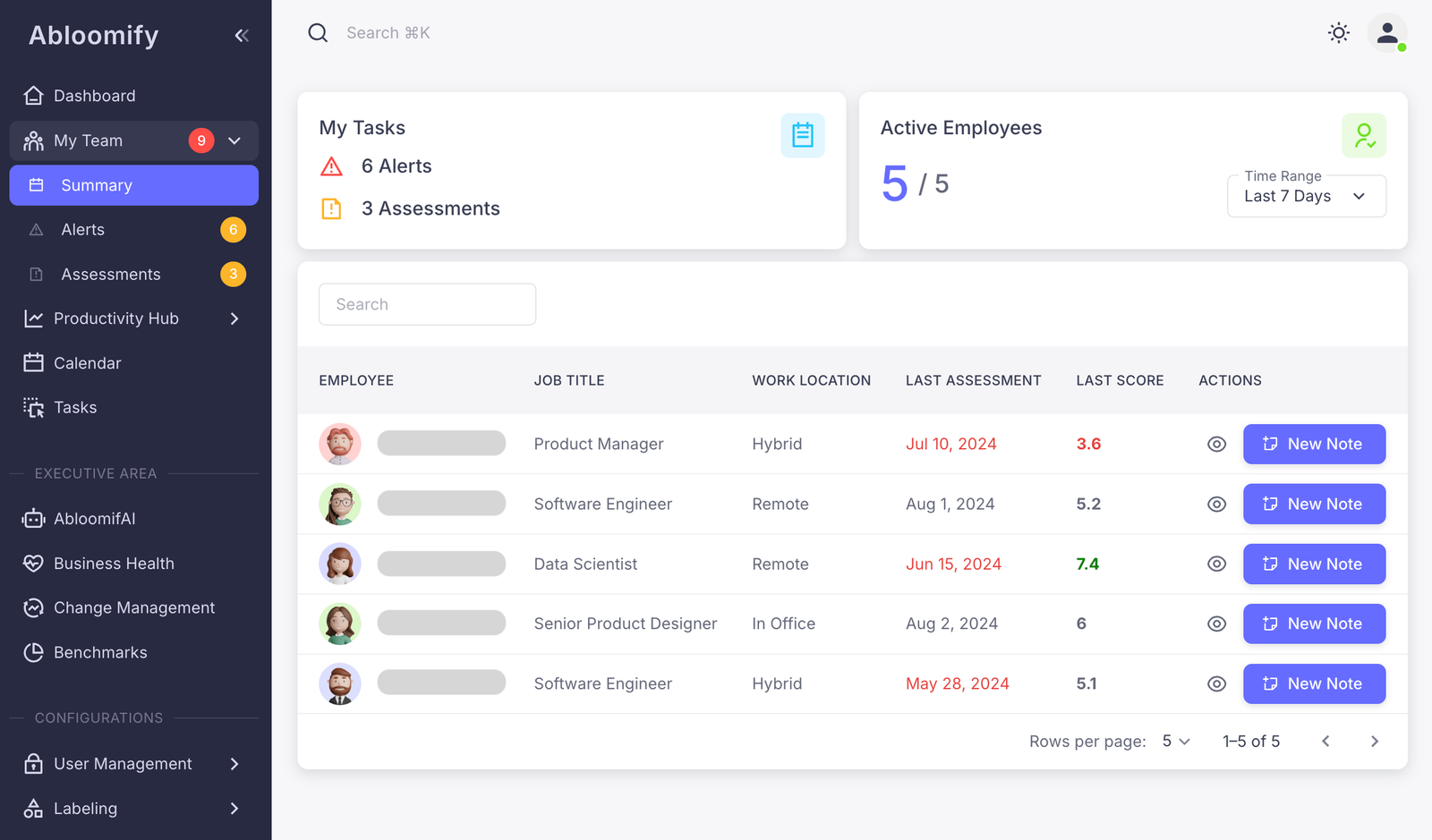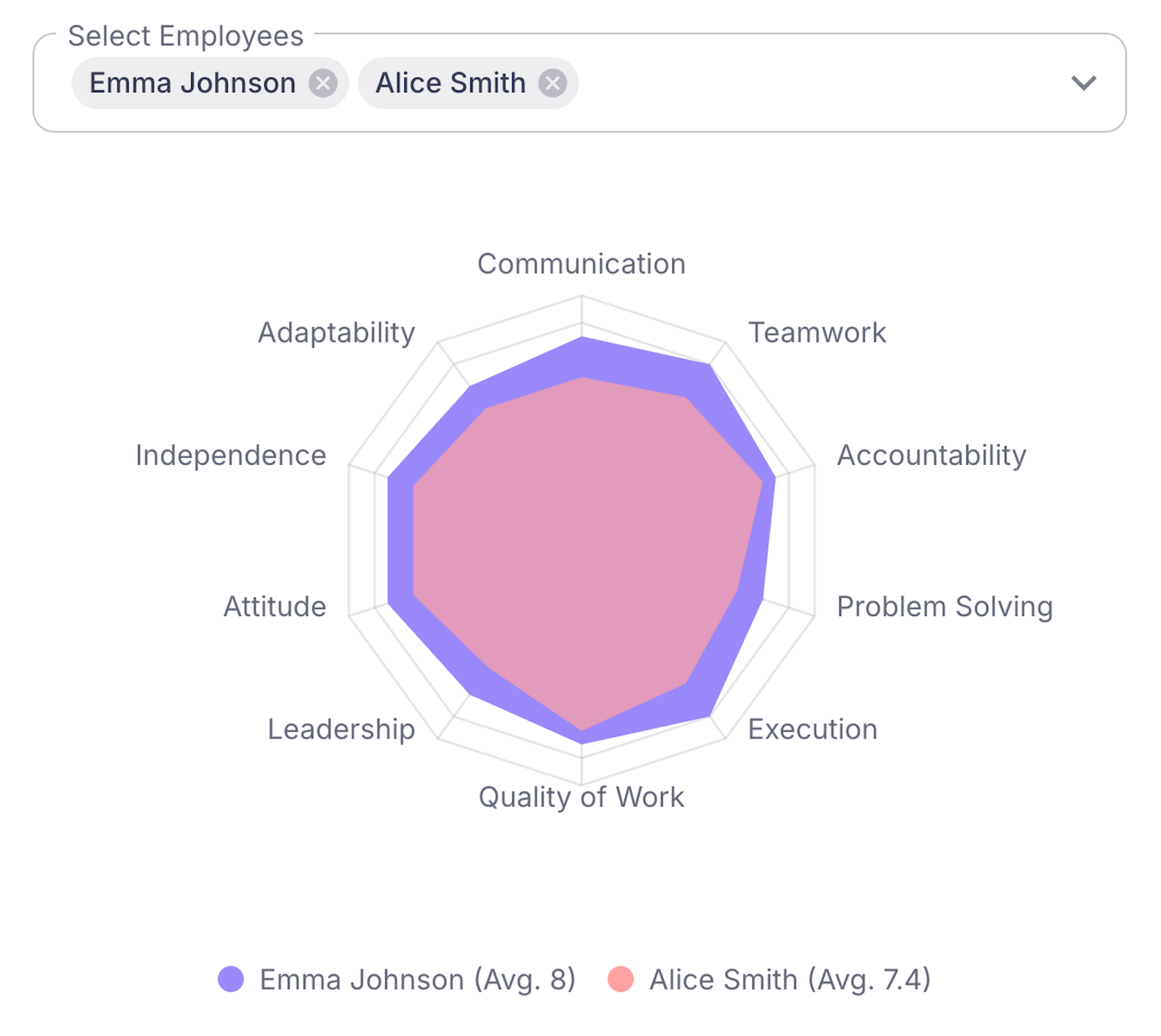Digital transformation in HR is revolutionizing the way companies manage teams. Discover top-rated tools that can enhance productivity, streamline operations, and offer data-driven insights to HR leaders.
Understanding Digital Transformation in HR
Digital transformation in HR is more than just a buzzword. It’s a pivotal shift that redefines how we engage with and manage talent. The journey begins by adopting technology that brings efficiency and data precision into the equation. Today’s human resources teams are transitioning from traditional practices, embracing agility and analytics as the new norm.
Incorporating digital tools enables HR to:
- Streamline recruitment by using AI-powered platforms that analyze large datasets for better candidate fits.
- Enhance employee experience through personalized development programs driven by data insights.
- Implement predictive analytics to foresee workforce trends, improving talent retention strategies.
Digital transformation means moving away from the historically manual, paper-heavy HR tasks to a smarter, evidence-based approach. Advanced software allows HR professionals to access real-time data, fostering a culture of continuous improvement and adaptability.
The implications are vast. These technological advancements create more efficient processes and drive strategic decision-making. Whether it’s assessing the impact of training programs or forecasting staffing needs, data-driven insights are at the heart of modern HR strategies.
Tools that harness big data and machine learning redefine workforce planning. They ensure firms remain nimble in a competitive landscape. For insights into digital transformation in HR for tech companies, adopting these technologies enhances agility and alignment with business goals.
Ultimately, embracing digital transformation reshapes HR functions, making them more aligned with organizational success metrics. This evolution allows for more strategic input from HR, helping companies remain competitive and prepared for the future.
Key Challenges HR Faces in the Digital Era
HR departments face multiple challenges in the digital era. The shift to remote work significantly alters team dynamics, necessitating new ways to maintain productivity and collaboration. Managing remote teams effectively requires technology that supports seamless communication. Tools like Slack and Zoom facilitate this, but AI-driven platforms offer more. They can automate routine queries, provide real-time analytics on engagement, and suggest personalized interventions.
Data management also poses a challenge as HR struggles with vast amounts of information. Conventional spreadsheets are inadequate for actionable insights. Here, AI stands out by offering predictive analytics, identifying trends, and guiding strategic decisions. Knowing how to leverage these tools becomes crucial for data-driven HR functions.
Rapid technological change demands swift adaptation. Agility is no longer an option but a necessity. Digital transformation tools, like cloud-based HR management systems, streamline processes and simplify complex tasks. Automation tools reduce administrative burdens, freeing up HR professionals to focus on strategic goals.
Consider these practical solutions:
- AI-based analytics: These provide insights into employee behavior and help refine HR strategies.
- Remote work management tools: Platforms like Microsoft Teams or Slack integrate communication and task management.
- Data management systems: Utilize AI for real-time analytics and predictive insights.
Incorporating these technologies not only addresses challenges but elevates HR’s role in strategic planning and execution. HR leaders must navigate this landscape proactively, making informed decisions. For more insights on managing tech remote teams effectively, explore this resource. Effective adaptation ensures HR remains a pivotal part of the organizational structure, capable of steering significant transformations while maintaining a human-centric approach.
What Makes Transformation Tools ‘Top-Rated’
In the realm of HR, the best digital transformation tools are those that balance functionality with ease of use. At their core, they offer significant features that address the key challenges HR departments face. Here’s what makes a tool top-rated:
1. User-Friendliness: Tools must cater to diverse user levels and tech competencies within an organization. Intuitive design and straightforward interfaces reduce training time, ensuring fast adoption among HR teams.
2. Integration Capabilities: Seamless integration with existing systems is vital. Tools should effortlessly connect with payroll, talent management, and learning platforms. This connectivity streamlines processes, reduces redundancy, and enhances data flow.
3. Data Security: With large volumes of sensitive data in HR, robust security protocols are non-negotiable. Tools must comply with data protection standards, minimizing risk and building trust among users.
4. Actionable Insights: Top tools provide more than raw data. They offer clear, actionable insights through analytics, facilitating informed decision-making and strategic planning. These insights can help identify potential risks like burnout among employees.
5. User Feedback and Performance Metrics: Tools remain agile through user feedback and performance metrics. Continuous updates and improvements, guided by user reviews, maintain their relevance and effectiveness in a fast-evolving industry.
Evaluating these tools relies on quantitative data and qualitative feedback. Combining user reviews with performance metrics ensures a tool not only claims to deliver but genuinely enhances HR functions. For HR leaders seeking to optimize employee engagement, the perfect tool will offer a balance of innovation and practicality. Learn more about the nuances of effective HR transformation in tech through selecting top-rated HR tools for tech.
AI Manager Copilot The Ultimate HR Assistant
Imagine an assistant that not only anticipates your needs but also acts to optimize your workflow. Enter AI Manager Copilot. This tool integrates seamlessly into HR departments, revolutionizing them with a trifecta of productivity alerts, intelligent performance assessments, and the automation of mundane tasks like scheduling.
The beauty of AI Manager Copilot lies in its ability to cut through the noise. Imagine a system that alerts you when employee engagement starts to falter or detects early signs of burnout. This proactive approach enables HR leaders to intervene early, preserving both employee morale and productivity.
One standout feature of AI Manager Copilot is its handling of 360° feedback. Traditional methods often consume significant time and resources, but with machine learning algorithms, feedback collection becomes efficient, accurate, and insightful.
Automation doesn’t end there. Scheduling, a chronic pain point for many HR departments, is completely streamlined. The AI not only schedules meetings but optimizes timing based on participant availability and time zone differences.
Research-backed evidence shows that such tools can lead to better employee engagement and retention. With more data at their fingertips, HR professionals can make evidence-based decisions that benefit both the company and its employees.
Incorporating AI in HR practices isn’t just about automation; it’s about creating a supportive environment. With AI Manager Copilot, you’re not just reacting but strategically planning employee development and engagement initiatives. Check out this guide to improving communication in tech teams to see how AI integration can enhance HR effectiveness across the board.
Benefits of Data-Driven Workforce Planning
Incorporating digital tools into workforce planning presents myriad benefits for HR leaders, enhancing the agility and effectiveness of managing diverse work models. Here’s how:
- Capacity Planning: With robust analytics platforms, HR can align team size with business needs. By analyzing historical data, these tools predict future demand, helping to prevent understaffing or overstaffing, thereby optimizing the workforce.
- Workload Balancing: Advanced tools provide real-time insights into workloads across teams. By identifying bottlenecks and overburdened employees, they empower HR to distribute tasks evenly—reducing burnout and improving productivity.
- Flexible Work Insights: For office, hybrid, and remote teams, data-driven tools offer insights into effectiveness across different setups. This data enables HR to support employees in various settings while maintaining organizational goals.
- Enhanced Team Efficiency: Data analytics facilitate informed decision-making. Whether adjusting roles to meet dynamic needs or reallocating resources swiftly, the tools empower teams to maximize their potential.
- Succession Planning: Beyond immediate needs, digital insights reveal long-term workforce trends. This foresight aids in identifying future leaders and preparing for potential turnover, ensuring organizational continuity.
With these tools, HR can transition from reactive to proactive workforce management. As these methodologies evolve, they align effectively with ongoing performance assessments, further enhancing overall employee engagement and retention. For more on optimizing workforce utilization, see the discussion on comparing tech workforce planning tools. This seamless integration into the larger HR framework ensures that as organizations grow, they are ready to meet new challenges head-on.
Streamlining Performance Management with AI
Artificial intelligence is revolutionizing performance management by providing ongoing evaluations and career planning. Tools like Abloomify use AI to deliver continuous feedback, creating a transformative shift in how HR teams evaluate and develop talent. These solutions are helping companies transition from annual reviews to a more dynamic process.
Abloomify’s standardized assessment framework offers several key benefits for HR teams seeking rapid, informed decision-making. By leveraging data to provide uniform evaluations, it ensures consistency and objectivity. This approach helps in identifying skill gaps and training needs while aligning individual goals with organizational objectives.
Key advantages of using AI-powered performance tools like Abloomify are:
- Continuous Feedback: Employees receive regular insights into their performance, which encourages ongoing development and alignment with company goals.
- Data-Driven Decisions: Evaluations backed by data help eliminate biases and provide clear, actionable insights for HR teams.
- Career Path Planning: The AI-powered framework allows for personalized career development plans, offering employees clear growth trajectories.
- Enhanced Employee Development: Targeted skill advancement programs are created, focusing on the specific needs of employees.
Incorporating AI into performance management not only enhances employee development but also supports organizational growth. By understanding individual capabilities and tracking progress in real-time, HR teams can quickly adjust strategies to optimize resources.
For companies looking to navigate these changes, exploring tools tailored for specific industries, like those outlined in AI solutions for tech HR, can provide valuable insights. Transitioning effectively to an AI-driven performance management system will ensure organizations are equipped to handle future challenges.
Overcoming Change Management Hurdles
Change management in HR often feels like trying to sail through stormy seas. But with the right tools onboard, those challenges become more approachable. To tackle change management hurdles, tech-savvy HR leaders can leverage key strategies and digital tools.
Adopting new technologies is often met with resistance. But data-driven insights can help smoothen the transition. Consider these strategies to navigate through:
- License Usage Analysis Tools: Track and evaluate software usage across your organization. By identifying underutilized licenses, HR leaders can cut unnecessary costs and optimize resources.
- Privacy-First Tools: Implement solutions that prioritize data privacy to maintain employee trust. Many employees are wary about how their personal information is handled, making transparency crucial during digital shifts.
- Employee Feedback Platforms: Foster open communication through regular surveys and feedback channels. When employees feel heard, they are more likely to embrace change.
- Training and Support Systems: Provide comprehensive training and ongoing support. Equip your team with the skills they need to adapt to new workflows and technologies.
Research shows that reducing friction points in technology adoption can significantly increase success rates. By focusing on these areas, HR leaders can effectively overcome barriers and support their teams through transformation.
Incorporating these strategies into your HR processes helps maintain trust while improving efficiency. For HR leaders seeking more in-depth insights on workforce optimization and change management, explore Unlocking the Power of Workforce Analytics. As you refine your HR transformation approach, remember that the right tools are essential to navigating these changes successfully.
Choosing the Right Tools for Your Organization
Choosing the right digital transformation tools for HR requires a blend of strategic thinking and practical application. When selecting tools, prioritize those that offer ease of integration and adaptability for future organizational shifts. Evaluate potential tools by considering these key factors:
- Alignment with Business Goals: Ensure the technology supports your company’s strategic objectives, facilitating seamless operations and enhancing productivity.
- Scalability: Choose solutions that can grow with your organization, accommodating an expanding workforce or evolving business needs without causing disruptions.
- Integration Capabilities: Opt for tools that integrate efficiently with existing systems, minimizing operational friction and maximizing the utility of current data.
- User Experience: Prioritize tools with intuitive interfaces to enhance user adoption and engagement, which is pivotal for successful implementation.
- Security and Compliance: Ensure tools meet regulatory requirements and have robust security measures to protect sensitive employee data.
Implementing these technologies involves careful planning and stakeholder alignment. Start with a pilot program to identify potential challenges and gather user feedback. Monitor progress and adjust strategies to align with identified needs and changing contexts. Engage with cross-functional teams to ensure a cohesive rollout across the organization.
For a personalized approach to implementing HR tools, Explore AI-powered HR solutions with Abloomify. Embracing digital transformation in HR requires more than just technology; it demands a clear understanding of your organizational culture and vision. By thoughtfully selecting and implementing these tools, you’ll drive efficiency and enhance employee experiences. For insights on streamlining HR processes, visit Streamlining HR Processes in Tech Firms. This resource provides deeper perspectives on integrating technology in HR operations.
Final words
Embracing digital transformation tools in HR is essential for staying competitive. With solutions like Abloomify, organizations can optimize team dynamics and enhance productivity, making data-driven decisions easier. Discover how integrating top-rated tools can benefit your HR strategy by visiting Abloomify today.



